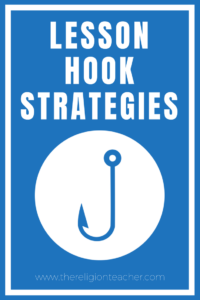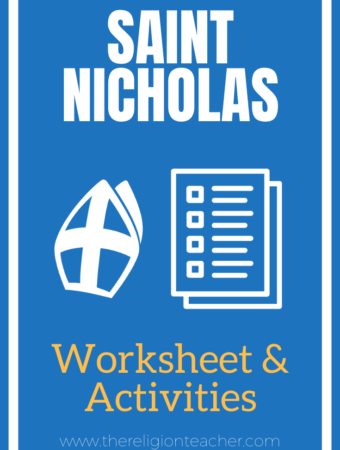As soon as I read about the idea of using a “Hook” at the beginning of a lesson to get students’ attention, I immediately added it to every lesson I planned. I got the strategy from Doug Lemov’s Teach Like A Champion book and I include it as an important strategy in the learning process in my book, Christ in the Classroom.
In this video I summarize Lemov’s Hook Strategies:
The most important thing to understand about a Hook strategy is that the purpose is not to explain; it is meant to inspire. You are trying to inspire interest in the topic you are about to teach. You will be able to help your students make connections during the lesson to your hook to help them simplify their understanding of the new ideas they learn.
My Favorite Lesson Hook Strategies
 Here are brief examples of my favorite Hook Strategies taken from my book, Christ in the Classroom:
Here are brief examples of my favorite Hook Strategies taken from my book, Christ in the Classroom:
1. Object
Imagine that you are to teach about baptism. Rather than beginning your lesson with an explanation of what baptism is and means to us as Catholics, spend just a few moments unlocking some prior knowledge to build upon during the lesson.
The most obvious way to introduce a lesson on baptism is to bring in a visual aid: water.
With a cup or bowl of water on display at the front of the room, invite students to share what they already know about water.
This is how you begin to construct the scaffolding needed to build upon this knowledge later with a more thorough explanation of the meaning of baptism.
2. Metaphor
You can also make a connection to something the students already know by using a simple verbal metaphor.
In our baptism lesson, for example, use the metaphor of taking a bath or going for a swim to help build the foundation to teach about washing away our sins through baptism.
3. Story
Find a relevant story from scripture, the lives of the saints, current events, school or parish events, or your own personal testimony. The human brain is wired to remember stories, which makes them a great way to hook your students’ attention.
Share the story of your own baptism or, if you have kids, your child’s baptism. Tell the story of Jesus’ baptism
or the baptism of a famous saint.
4. Song
To integrate music into your lessons, find a relevant praise and worship song to use in class or get a recording of a song commonly sung at Mass in your parish. You can also use popular songs in class, but make sure they are appropriate.
For a lesson on baptism, songs such as “Morning Has Broken” or “Baptized in Water,” both sung to the same tune, are appropriate.
5. Video
A lot of educators use videos in class these days. Remember, the purpose of the hook is not to teach new ideas; it is to tap into knowledge that students already have. Therefore, the videos you play for the hook should be inspirational stories or demonstrations of real-life events.
Show a video of someone’s baptism to help students experience what they will learn about during the lesson.
To get additional lesson planning strategies like this one, check out Christ in the Classroom: Lesson Planning for the Heart and Mind.


